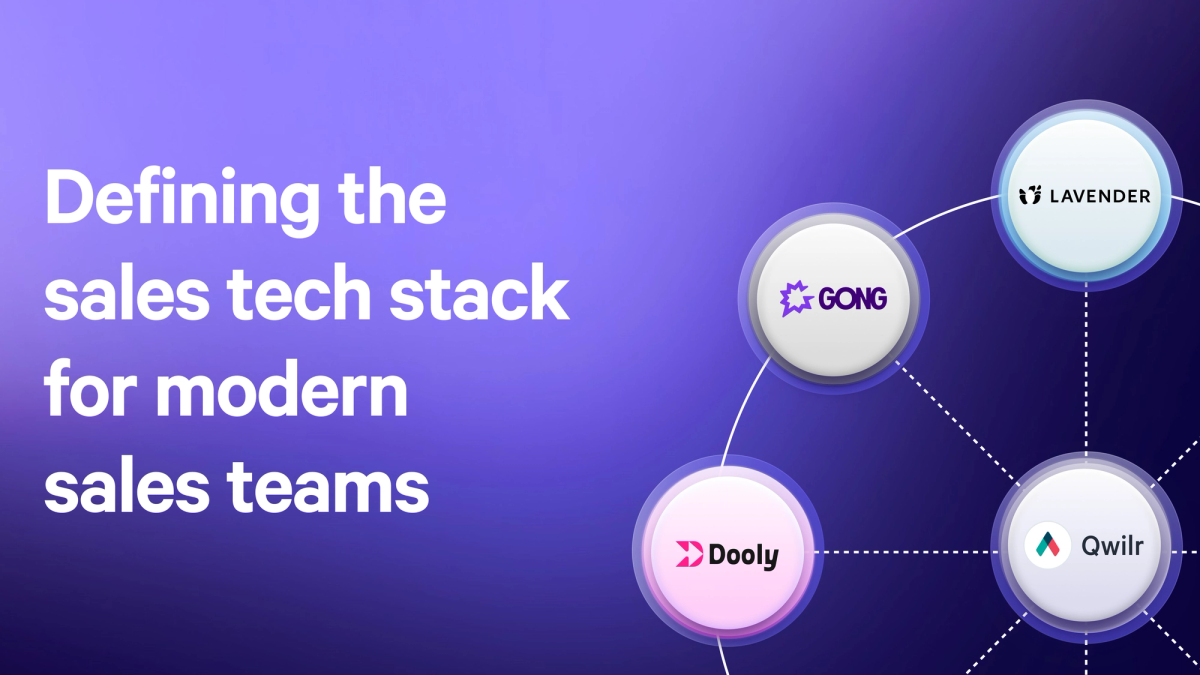
Sales enablement has emerged as critical in driving go-to-market success and achieving revenue targets. This change is more than a general industry trend. Instead, it reflects the evolving demands on sales leaders to drive more efficient growth. We have collated 20+ sales enablement statistics that showcase why sales enablement has become a core go-to-market function in the last few years. If you are a revenue leader looking to stay ahead, I hope you find this compilation and trend analysis helpful.
Key takeaways:
- Sales enablement is critical for go-to-market success, with 87% of top cloud companies investing in it.
- Sales enablement strategies lead to an 8% increase in quarterly revenue and a 49% win rate on forecasted deals.
- Sales enablement technology is a priority investment for 55% of C-suite leaders.
- Effective sales training programs lead to 84% of sales reps achieving quota.
- AI is becoming integral in sales, with 68% of professionals predicting most software will have built-in AI by 2024.
The rise of sales enablement
Sales enablement is increasingly recognized as a crucial lever for successful sales teams striving to 'do more with less.'
Accelerating investment trends: As of December 2023, 87% of companies on the Cloud 100 list have sales enablement or revenue enablement professionals in their organizations (Qwilr). Among these companies, the average team size focused solely on sales enablement is four members. The Cloud 100, compiled by Forbes in partnership with Bessemer Venture Partners and Salesforce Ventures, showcases the top private cloud computing companies globally.
Expanding job market: In 2023, 'Sales Enablement Specialist' was the 6th fastest growing job title on Linkedin, with 'Head of Revenue Operations' topping the list. This trend signifies the growing importance of the sales enablement function in the job market. Candidates for the Sales Enablement Specialist position typically have experience in Salesforce, sales operations, and SaaS. Seattle, San Francisco, and Boston are the most active hiring regions for this role. Nearly half (48%) of these roles offer remote work options. Salaries for this position range from USD 50,000 to USD 157,000 [1].
Surging online interest: As of Dec 2023, search volume for 'sales enablement' rose 32% compared to three years earlier. This result underscores the growing interest in this discipline (Qwilr).
Check out our interactive online interest chart below:
The impact of sales enablement on business outcomes
The influence of sales enablement, as reflected in recent stats, permeates various facets of business performance, reshaping traditional sales approaches and driving more efficient outcomes.
Financial outcomes: Sales enablement increases revenue in more ways than one. Thanks to factors like improved win rates and internal alignment, companies with sales enablement strategies experience an 8% increase in their quarterly revenue [2].
Win rates: Organizations implementing sales enablement strategies boast a 49% win rate on forecasted deals, a significant elevation from the 43% for those without. This difference highlights the importance of sales enablement in meeting sales targets and suggests that sales enablement helps improve the overall buyer experience [3].
Reducing turnover: Sales enablement investment has been found to reduce sales turnover rates by 59%, indicating its effectiveness in stabilizing and enhancing overall team performance [2].
Strategic advantage: Companies with comprehensive sales enablement programs are more likely to exceed their revenue targets. This strategic advantage is crucial in the competitive marketplace, where effective sales enablement can be the differentiator in achieving business goals.
Quota attainment: With 91% of B2B companies failing to hit sales quota expectations in 2023, there's a clear indication that aligning sales enablement strategies with evolving market demands is crucial for meeting revenue objectives [4].
The role of tech in sales enablement
Sales enablement technology is now a pivotal element in any robust go-to-market strategy. This suite of tools, encompassing everything from proposal software to AI sales tools and conversational intelligence, is essential for addressing the multifaceted needs of modern sales teams. These technologies have evolved beyond being mere 'single-point' solutions. They are increasingly instrumental in modern sales practices, making revenue teams more efficient and data-driven.
Priority investment area for executives: 55% of C-suite leaders have identified sales enablement tools as their companies' most important technology investment [5]. This result reflects a growing recognition at the highest levels of business that empowering sales teams with the right technology is critical to driving revenue and staying competitive in today's market.
Sales tech stacks are becoming unruly: With 70% of reps using ten or more sales tools, the challenges of building and maintaining an integrated sales tech stack are more pronounced than ever [6]. Many sales leaders are having to add sales enablement headcount to reflect this shift.
Sales training and development statistics
Training and development are key pillars of effective sales enablement teams. Well-trained sales reps are more equipped to serve the complex needs of buyers, deliver a great customer experience and handle the challenges that come with the role (objections, rejection etc).
Impact on quota attainment: 84% of sales reps achieve quota when a robust sales enablement strategy is in place. This points to the transformative potential of well-structured sales training programs in empowering reps to do their best work, especially when in conjunction with a suitable sales methodology [3].
Impact on win rates: Besides high quota attainment, effective sales coaching has improved win rates by up to 29%. This is impactful because improvements in win rates help improve business metrics like revenue per rep and customer acquisition costs [3].
Sales content management insights
The role of content in sales enablement is crucial, serving as the backbone of effective customer engagement strategies. This includes not only educational and marketing materials but also key sales documents like a well-written sales proposal or proposal templates, which are integral in the final stages of the sales process. However, current trends in sales content management reveal significant gaps in content creation and usage. These gaps present critical challenges as well as opportunities for improvement.
Room for growth in content effectiveness: Despite the critical role of content, only 35% of sales teams track the effectiveness of their content. This indicates significant room for improvement in how content is used and managed by marketing and sales teams. Teams that can determine what content is most beneficial to buyers and reps and how to use it effectively can achieve better go-to-market outcomes [3].
Under-prepared for sales conversations: 42% of sales reps report needing more information about their buyers before making calls, stressing the need for better prospect and customer intelligence. This gap underscores the importance of ensuring sales teams have easy access to relevant information in their CRM or sales engagement tool [5].
The role of CRMs in high-performing sales teams
In 2024, it's not just about having a CRM system; it's about using it effectively and meeting heightened expectations for accuracy and maintenance. Sales enablement plays a vital role by enforcing standards and simplifying processes.
Sales and marketing alignment: 74% of businesses using CRM and marketing automation have successfully aligned their Marketing and Sales departments [3]. This high percentage underscores the effectiveness of CRM systems in bridging the gap between sales and marketing, leading to a more cohesive and unified go-to-market approach.
Impact of internal alignment: Companies with integrated sales and marketing teams achieve a 67% higher likelihood of successfully closing leads generated by marketing efforts [5]. By effectively aligning these two key departments, businesses can build pipeline more efficiently and increase the predictability of closed won revenue.
Enhanced productivity: 18% of sales professionals who use a CRM system cite its primary advantage as increasing productivity and reducing time spent on administrative activities [7]. This statistic highlights the role of CRM in streamlining sales processes, allowing sales teams to focus more on strategic sales activities.
The future of sales enablement with AI and automation
The sales enablement landscape is rapidly evolving with the integration of AI and more advanced automation. In 2023, we saw it reshape the expectations of sales reps, and it's now shaping the responsibilities of modern sales enablement teams. As AI becomes more embedded in popular sales tools, its impact on the sales process is becoming increasingly profound.
Here are some of the latest predictions and sentiments from mid-2023:
Predicted rise of AI in Sales Tools: A striking 68% of sales professionals anticipate that by 2024, most software will feature built-in AI capabilities. This prediction highlights a significant shift towards AI-driven sales environments, suggesting a future where AI is not just an 'add-on' but a fundamental component of the sales tech stack that enablement teams must evaluate and implement.
Current importance of AI in sales: 52% of sales professionals acknowledge the crucial role of AI in their day-to-day tasks. This stat reflects the growing reliance on AI in sales operations. It's even possible generate a proposal with AI.
Productivity impact: 78% of sales professionals agree that AI can enable them to dedicate more time to the most vital aspects of their roles. This perspective underscores AI's potential to automate routine tasks and free up sales reps to focus on strategic activities that require human insight and expertise. In time, AI could become one of the best sales productivity tools.
Personalizing sales activities: 61% of sales professionals believe that AI can significantly enhance the personalization of prospecting. This view highlights AI's capability to analyze vast amounts of data to generate insights and enable sales reps to tailor their approach to each prospect.
AI is not just transforming the sales landscape but is set to become an integral part of it. Sales enablement teams can get ahead by automating routine tasks and providing deep insights for personalized engagement. Ultimately, AI empowers sales enablement teams to focus on what they do best – developing effective enablement programs, orchestrating the tooling to increase rep efficiency and, in turn, driving bottom-line business impact.
This will be especially helpful for lean startups who may not have as many resources, making AI among the best tools for startups who need to increase their sales volume more rapidly.
Credit to Hubspot for the latest research on this topic [8].
Challenges in building out a sales enablement org
While building a sales enablement strategy and team offers numerous benefits, its implementation by enablement leaders comes with challenges. These obstacles can range from organizational resistance to technological complexities.
Change management: One of the primary hurdles in implementing an enablement function is the sales organizations' resistance to change, with only 32% of salespeople believing their sales enablement solutions align with organizational goals [2]. Overcoming this requires a strategic approach to change management, addressing both cultural and operational aspects.
Budget and resource allocation: Financial constraints and the complexity of integrating new technologies pose significant challenges, as 52% of respondents cite a need for more staff and resources as substantial barriers to sales enablement maturity [5].
Effective planning and resource allocation are crucial to ensure the successful adoption and utilization of sales enablement practices in any enablement program.
Further Sources:
Final thoughts
Dedicated sales enablement has become an indispensable pillar of the modern revenue team. The stats and trends of 2024 paint a comprehensive picture of its widespread importance.
As sales leaders navigate the evolving sales landscape, implementing best-in-class sales enablement practices and further investment in this pillar will be key to long-term business outcomes.
About the author

Brendan Connaughton|Head of Growth Marketing
Brendan heads up growth marketing and demand generation at Qwilr, overseeing performance marketing, SEO, and lifecycle initiatives. Brendan has been instrumental in developing go-to-market functions for a number of high-growth startups and challenger brands.
FAQs
Organizations implementing sales enablement strategies boast a win rate of 49% on forecasted deals. This is a significant increase compared to the 43% win rate for organizations without such strategies, showcasing the importance of sales enablement in enhancing the overall buyer experience and meeting sales targets.
The sales enablement industry has shown substantial growth and recognition as a critical function in go-to-market strategies. Indicators of its size include the rapid expansion of the job market for roles such as 'Sales Enablement Specialist,' which was the 6th fastest-growing job title on LinkedIn in 2023. Additionally, the surge in online interest, with a 32% increase in search volume for 'sales enablement' compared to three years earlier, reflects the burgeoning significance of this industry.
The optimal ratio of sales enablement manager to sales reps typically ranges from one to thirty up to one to fifty. Identifying the right time to expand the sales enablement team involves evaluating the current capacity and the needs of the sales team in relation to the growth trajectory of the company.
Benchmarking against industry standards and understanding the full scope of the sales enablement role, including both sales and revenue enablement, can provide valuable insights. This strategic approach helps in determining when it might be appropriate to expand the team, ensuring that any increase in capacity aligns with the company's strategic growth objectives.
As of December 2023, among companies on the Cloud 100 list, the average team size focused solely on sales enablement is four members. However, the specific ratio of sales enablement professionals to sales reps may vary depending on the organization's size, structure, and strategic priorities.
Sales enablement significantly contributes to business outcomes by:
- Increasing win rates, with organizations using sales enablement strategies experiencing a 49% win rate on forecasted deals.
- Contributing to financial outcomes, as companies with sales enablement strategies witness an 8% increase in quarterly revenue.
- Reducing sales turnover rates by 59%, indicating its effectiveness in stabilizing and enhancing team performance.
- Enabling companies with comprehensive sales enablement programs to exceed revenue targets, providing a strategic advantage in the competitive marketplace.









